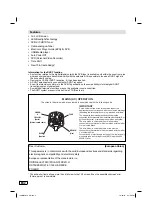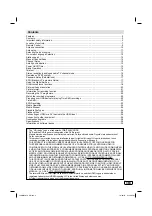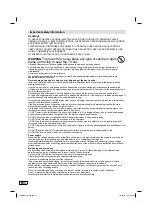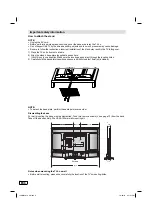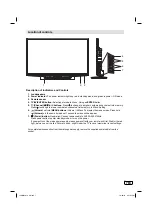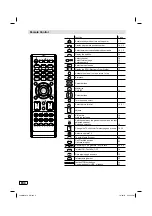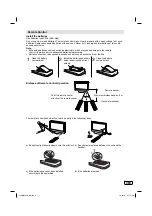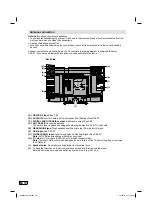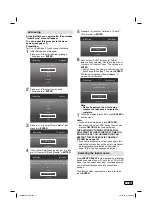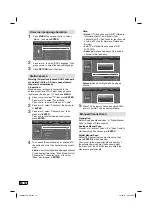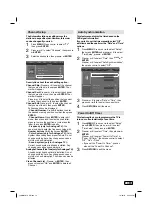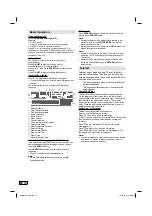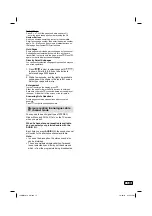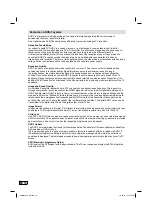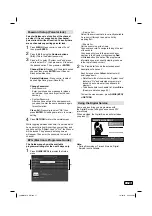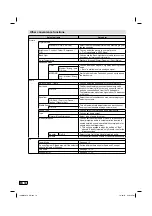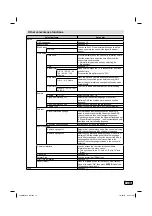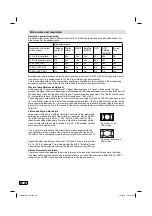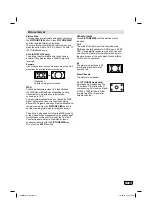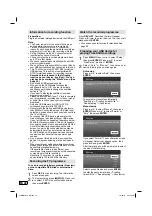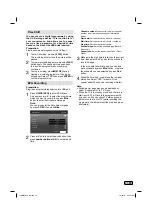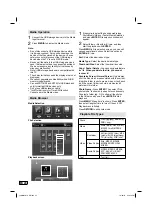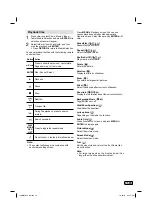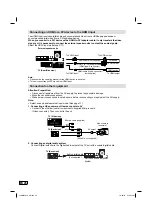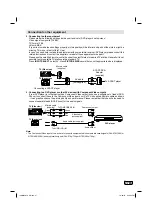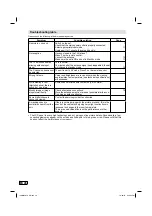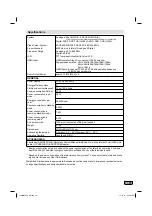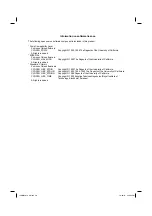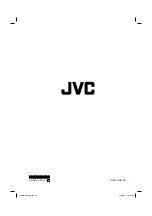
EN
16
Remarks on DVB-T system
DVB-T is at present still being developed. You can get information regarding the current stage of
development from your specialist retailer.
As a digital service DVB-T basically works differently to previous analogue TV reception.
Reception Possibilities:
In contrast to cable TV, DVB-T is received via room or roof antennas. A room antenna is sufficient for
reception within the reception area of a DVB-T transmitter. A roof antenna may perhaps be necessary for
reception in a fringe area. Existing roof antennas may have to be turned in a different direction.
Contact your specialist retailer to find out about the location of the reception areas or fringe areas. You
cannot get DVB-T reception outside the fringe area. Ask a certified antenna specialist for advice on
interference with reception. The tuner of this appliance cannot provide active room antennas with operating
voltage. Active room antennas have to be equipped with a separate power supply.
Reception Quality:
DVB-T reception principally either works really well or not at all. There is not a smooth transition with a
constant reduction in reception quality. Digital interference occurs at maximum reception range:
the image freezes, the picture becomes blocky, the sound breaks up or reception cuts out altogether
at times. If you notice interference with DVB-T reception then this is usually not due to a fault on the TV
appliance. Please contact an antenna specialist if you have interference with reception. Inspection of the
quality of DVB-T reception is not included in the free warranty to be provided by the manufacturer of the TV
appliance.
Image and Sound Quality:
An individual transmitter transmits up to 4 TV channels on one transmission frequency. This is possible
through compression in accordance with the MPEG standard, which is similar to digital data storage on a
DVD. The data rate of DVB-T is just a lot lower; at present the max. video bit rate is approx. 4Mbps and the
max. audio bit rate is at 256kbps. Visible interference (e.g. blocky picture) can result at extremely low data
rates despite there being excellent reception quality within vicinity of the transmitter. Blocky pictures are
no fault of the receiver. They are the result of the low data rate transmitted. The digital DVB-T sound can be
transmitted to the digital amplifier via the digital output of your TV set.
Image Format
Images are transmitted in 4:3 format, 4:3 letterbox format (with black bars above and below the picture) and
anamorphic 16:9 format (without black bars). The max. transmitted resolution at present is 704x576.
Child Lock
Like DVDs, DVB-T offers can also provide age-restricted access. At the moment, no channels are equipped
with this restriction. This appliance does, however, already offer the feature of setting up password protected
age restrictions, which only work when the respective programmes are broadcast.
DVB-T Update
The DVB-T norm earmarks the transfer of firmware updates. The transfer of firmware updates is called Over
Air Download or OAD for short.
If this product happens to require a firmware update in future, this update could be received via DVB-T. If
the available software for updating is detected, the confirmation message whether start the software to
download is displayed. The rest please proceed to download-operation according to the directions of a TV
screen.
EPG (Electronic Programme Guide)
EPG is part of the DVB-signal with 8-days-schedule. This TV can receive and display the EPG-information
included into DVB.
J3MW0401A_EN.indd 16
J3MW0401A_EN.indd 16
10/26/12 4:42:52 PM
10/26/12 4:42:52 PM

